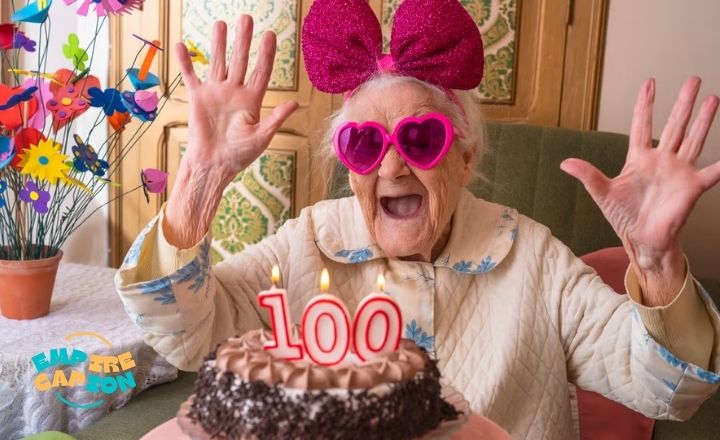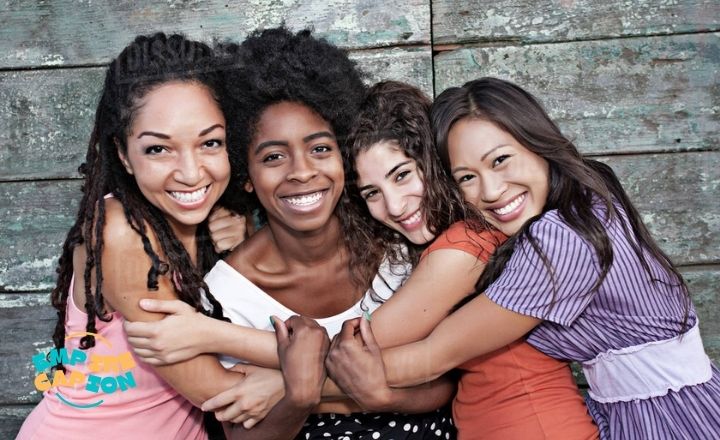The Complete Guide to Bastille Day: History, Celebration, and Social Media Captions 🇫🇷
Introduction: More Than Just a French Holiday
Bastille Day represents one of history’s most pivotal moments when ordinary citizens rose against oppression to demand liberty, equality, and fraternity. Celebrated annually on July 14th, this French national holiday has transcended borders to become a global symbol of democratic values and human rights. Whether you’re planning to attend local celebrations, share meaningful content on social media, or simply want to understand this significant day better, this comprehensive guide provides everything you need to know about Bastille Day.
The Historical Foundation: July 14, 1789
The Storming of the Bastille
The Bastille fortress in Paris stood as a symbol of royal authority and oppression for centuries. On July 14, 1789, an angry mob of Parisian revolutionaries stormed this medieval fortress, marking the beginning of the French Revolution. The fortress held only seven prisoners at the time, but its symbolic value was immense. The revolutionaries sought gunpowder stored within its walls, but more importantly, they aimed to strike a blow against the monarchy’s absolute power.
The storming wasn’t just about freeing prisoners or obtaining weapons—it represented the people’s rejection of autocratic rule and their demand for democratic governance. This single act sparked a revolution that would reshape not only France but influence democratic movements worldwide for centuries to come.
The Revolutionary Context
The late 18th century France was experiencing severe economic crisis, social inequality, and political upheaval. The Third Estate, comprising commoners, merchants, and bourgeoisie, bore the heaviest tax burden while the nobility and clergy enjoyed exemptions. King Louis XVI’s inability to address these issues, combined with Enlightenment ideas about natural rights and popular sovereignty, created the perfect storm for revolution.
The National Assembly had already formed, adopting the Tennis Court Oath just weeks before the storming of the Bastille. The revolutionaries were determined to create a new constitution based on the principles that would become France’s enduring motto: “Liberté, Égalité, Fraternité” (Liberty, Equality, Fraternity).
Modern Bastille Day Celebrations
In France: La Fête Nationale
In France, Bastille Day is officially known as “La Fête Nationale” or simply “le 14 Juillet.” The celebrations begin with the world’s oldest and largest military parade down the Champs-Élysées in Paris, reviewed by the French President. This grand spectacle showcases France’s military might, cultural diversity, and national pride.
The day typically includes:
- Military Parades: Featuring various branches of the French armed forces
- Air Shows: The Patrouille de France performs spectacular aerial displays
- Fireworks Displays: Magnificent pyrotechnic shows, especially at the Eiffel Tower
- Public Festivities: Street parties, concerts, and cultural events throughout France
- Bal des Pompiers: Traditional firefighters’ balls held the evening before
Global Celebrations
Bastille Day celebrations extend far beyond France’s borders. French communities worldwide organize festivities that honor their heritage while sharing French culture with their adopted countries. Major celebrations occur in:
- United States: Particularly in Louisiana, where French influence remains strong
- Canada: Especially in Quebec, maintaining francophone traditions
- Australia: French expatriate communities organize cultural events
- United Kingdom: London hosts significant Bastille Day celebrations
- Various Francophone Countries: Former French colonies maintain connections to French culture
The Cultural Impact and Modern Relevance
Symbols and Traditions
Bastille Day celebrations are rich with symbolic elements that connect modern France to its revolutionary heritage:
The Tricolor Flag: The blue, white, and red flag represents the revolution’s ideals—blue and red from Paris’s coat of arms, white representing the monarchy, unified in the new republic.
La Marseillaise: France’s national anthem, originally titled “War Song for the Army of the Rhine,” captures the revolutionary fervor and continues to inspire French patriotism.
Marianne: The female personification of the French Republic, symbolizing liberty and reason, appears on official documents and currency.
Contemporary Significance
In today’s world, Bastille Day serves multiple purposes:
- Historical Remembrance: Honoring those who fought for democratic ideals
- National Unity: Bringing together diverse French communities
- Cultural Pride: Celebrating French contributions to art, cuisine, philosophy, and human rights
- International Relations: Strengthening diplomatic ties through cultural exchange
- Educational Opportunity: Teaching younger generations about democratic values
Social Media and Digital Age Celebrations
The Rise of Digital Commemoration
In our interconnected world, Bastille Day celebrations have evolved to include significant digital components. Social media platforms become virtual spaces for cultural exchange, historical education, and community building. People worldwide share their connections to French culture, whether through ancestry, travel experiences, culinary adventures, or philosophical alignment with revolutionary ideals.
Instagram’s Role in Modern Celebrations
Instagram has become particularly important for Bastille Day celebrations due to its visual nature. Users share:
- Cultural Photography: Images from parades, fireworks displays, and local celebrations
- Culinary Content: French food, wine, and dining experiences
- Historical Education: Infographics and informational posts about the revolution
- Personal Connections: Stories about French heritage or cultural appreciation
- Fashion and Lifestyle: French-inspired outfits and aesthetics
Crafting Meaningful Bastille Day Content
Categories of Social Media Content
Celebratory Posts: These capture the joy and festivity of the day, perfect for sharing photos from parades, fireworks displays, or local French cultural events. They emphasize the communal aspect of celebration and the continuation of traditions.
Historical Reflection: Content that honors the revolutionary heritage, educating audiences about the significance of July 14, 1789, and its lasting impact on democratic movements worldwide.
Culinary Appreciation: French cuisine represents a significant cultural export, and Bastille Day provides an excellent opportunity to celebrate French culinary traditions from croissants and champagne to elaborate multi-course meals.
Cultural Appreciation: Posts that explore French contributions to art, literature, philosophy, and lifestyle, connecting historical France to contemporary cultural influence.
Personal Connection: Content that shares individual relationships with French culture, whether through travel, study, family heritage, or philosophical affinity.
Writing Effective Captions
The most impactful Bastille Day captions combine several elements:
Historical Awareness: Understanding the significance of the day enhances the authenticity of your content. References to the revolution, key historical figures, or democratic ideals add depth.
Cultural Sensitivity: Approaching French culture with respect and genuine appreciation rather than stereotypical representations creates more meaningful engagement.
Personal Voice: Authentic personal experiences and genuine enthusiasm resonate more than generic statements.
Visual Coordination: Captions that complement and enhance accompanying visuals create cohesive, professional-looking posts.
Engagement Consideration: Content that invites interaction through questions, calls-to-action, or shareable quotes tends to perform better on social platforms.
The French Language Element
Key Phrases and Their Significance
Understanding basic French phrases enhances Bastille Day content:
- “Joyeux 14 Juillet!” – The traditional Bastille Day greeting
- “Vive la France!” – “Long live France!” expressing patriotic sentiment
- “Liberté, Égalité, Fraternité” – The revolutionary motto still relevant today
- “La Fête Nationale” – The official French name for the holiday
- “Vive la République!” – Celebrating republican values over monarchy
Cultural Nuances
French culture values subtlety, sophistication, and intellectual depth. Effective Bastille Day content reflects these preferences by:
- Avoiding overly dramatic or superficial expressions
- Incorporating philosophical or intellectual elements
- Demonstrating genuine cultural knowledge
- Balancing celebration with historical respect
- Using elegant, refined language choices
Food and Culinary Traditions
Traditional Bastille Day Foods
French cuisine plays a central role in Bastille Day celebrations:
Breakfast Items: Croissants, pain au chocolat, and café au lait represent the French morning tradition
Bread and Cheese: Baguettes with various French cheeses (Camembert, Roquefort, Brie) showcase France’s legendary culinary craftsmanship
Wine Culture: French wines from different regions (Champagne, Bordeaux, Burgundy) accompany most celebrations
Pastries and Desserts: Macarons, éclairs, and tarte tatin represent French patisserie excellence
Charcuterie: French cured meats and pâtés reflect traditional food preservation techniques
Modern Fusion Celebrations
Contemporary Bastille Day celebrations often blend traditional French elements with local cuisines, creating unique fusion experiences that honor French culture while embracing cultural diversity.
Regional Variations and International Adaptations
French Regional Differences
Different regions of France celebrate Bastille Day with local variations:
Provence: Incorporates Mediterranean influences with olive-based dishes and rosé wines
Normandy: Features apple-based dishes, Calvados, and maritime traditions
Alsace: Blends French and German influences reflecting the region’s complex history
Loire Valley: Emphasizes wine culture and château heritage
International Adaptations
Countries with French colonial history or significant French populations adapt Bastille Day celebrations to local contexts:
Louisiana: Combines French traditions with Creole and Cajun influences
Quebec: Emphasizes francophone culture within North American context
French Polynesia: Blends French culture with Pacific Island traditions
West Africa: Former French colonies maintain connections while celebrating independence
The Digital Photography Aspect
Capturing Bastille Day Moments
Effective Bastille Day photography focuses on:
Symbolic Elements: Flags, monuments, traditional costumes, and cultural artifacts
Human Stories: People celebrating, families gathering, communities coming together
Cultural Details: Close-ups of food, architectural elements, artistic displays
Light and Color: The tricolor theme, golden hour lighting, fireworks displays
Candid Moments: Genuine emotions and spontaneous celebrations
Technical Considerations
For social media success, Bastille Day photography should consider:
- Lighting: Natural light enhances the authentic feel of celebrations
- Composition: Rule of thirds and leading lines create visually appealing images
- Color Coordination: Working with the blue, white, and red theme
- Storytelling: Each image should contribute to a narrative about the celebration
- Platform Optimization: Different social media platforms have varying image requirements
Educational Value and Historical Accuracy
Avoiding Common Misconceptions
Popular culture sometimes misrepresents Bastille Day and the French Revolution. Accurate content should:
- Recognize the complexity of revolutionary causes beyond simple oppression narratives
- Acknowledge both positive and negative aspects of the revolutionary period
- Understand regional and class differences within French society
- Avoid romanticizing violence while celebrating democratic achievements
- Present historical figures as complex individuals rather than simple heroes or villains
Teaching Opportunities
Bastille Day provides excellent educational opportunities for:
Democratic History: Understanding the evolution of democratic institutions
Human Rights: Exploring the development of human rights concepts
Cultural Studies: Learning about French contributions to global culture
Language Learning: Introducing French vocabulary and pronunciation
International Relations: Understanding France’s role in global affairs
Future Trends and Evolution
Digital Innovation
Bastille Day celebrations continue evolving with technology:
Virtual Reality: Immersive experiences of historical events and modern celebrations
Augmented Reality: Interactive elements added to physical celebrations
Live Streaming: Global access to French celebrations through social media platforms
Digital Archives: Online repositories preserving historical documents and cultural artifacts
Sustainable Celebrations
Environmental consciousness increasingly influences Bastille Day celebrations:
Eco-friendly Fireworks: Reduced environmental impact pyrotechnics
Local Sourcing: Emphasizing local French products and suppliers
Waste Reduction: Sustainable celebration practices
Digital Alternatives: Virtual celebrations reducing travel-related emissions
Conclusion: The Enduring Legacy
Bastille Day represents far more than a historical commemoration—it embodies humanity’s ongoing struggle for freedom, equality, and dignity. In our digital age, social media provides new platforms for sharing these timeless values while celebrating the rich cultural heritage of France.
Whether you’re sharing a simple “Joyeux 14 Juillet!” greeting or crafting elaborate posts about French culture and revolutionary history, remember that Bastille Day content at its best connects past and present, individual and community, local and global. The day reminds us that the ideals proclaimed in 1789—liberty, equality, and fraternity—remain relevant and necessary in our contemporary world.
As you celebrate Bastille Day, whether in person or through digital participation, consider how the revolutionary spirit of July 14, 1789, continues inspiring people worldwide to build more just, equitable, and free societies. The fortress may have fallen over two centuries ago, but the ideas it represented continue shaping our collective future.
Vive la liberté! Vive l’égalité! Vive la fraternité!







